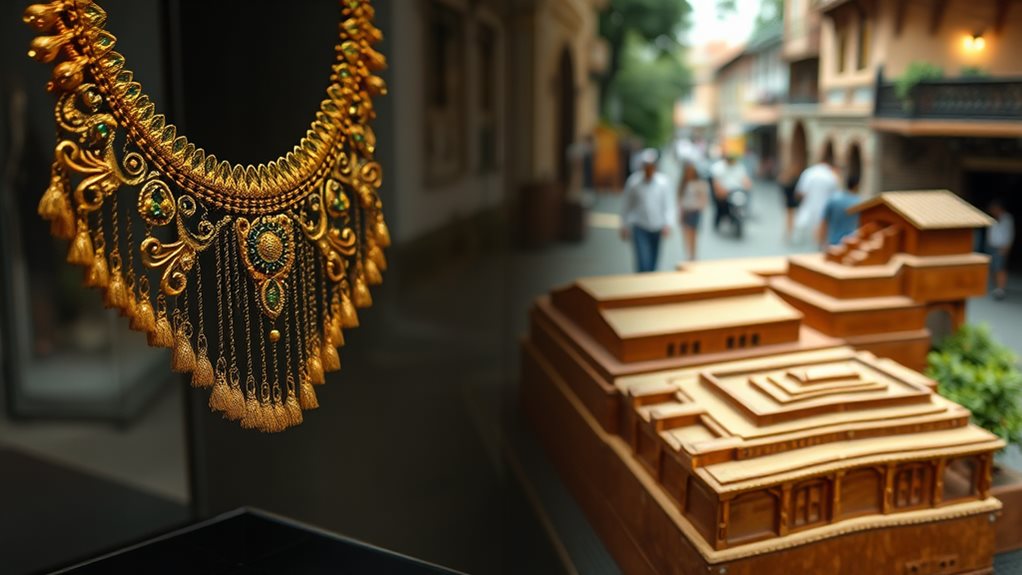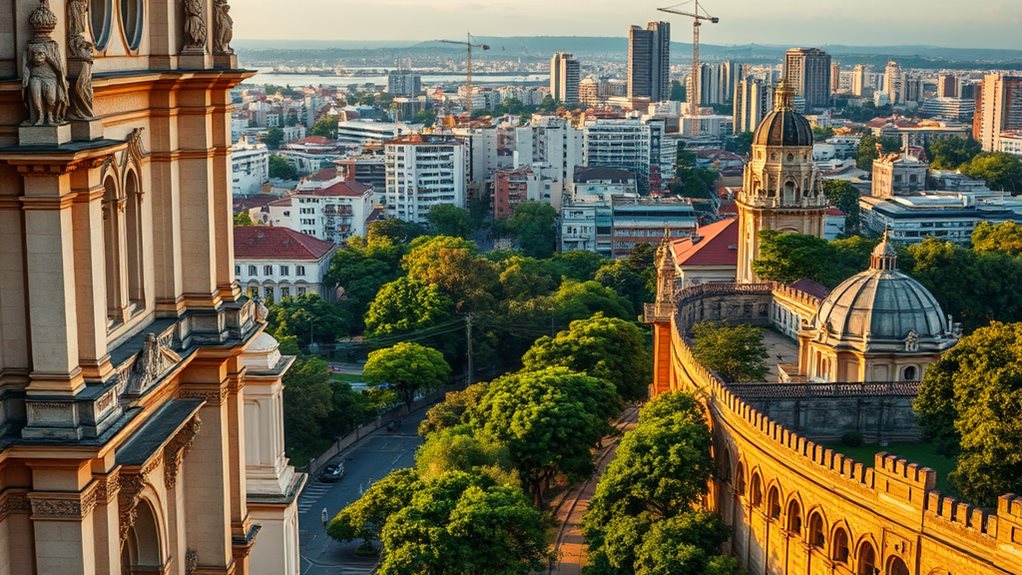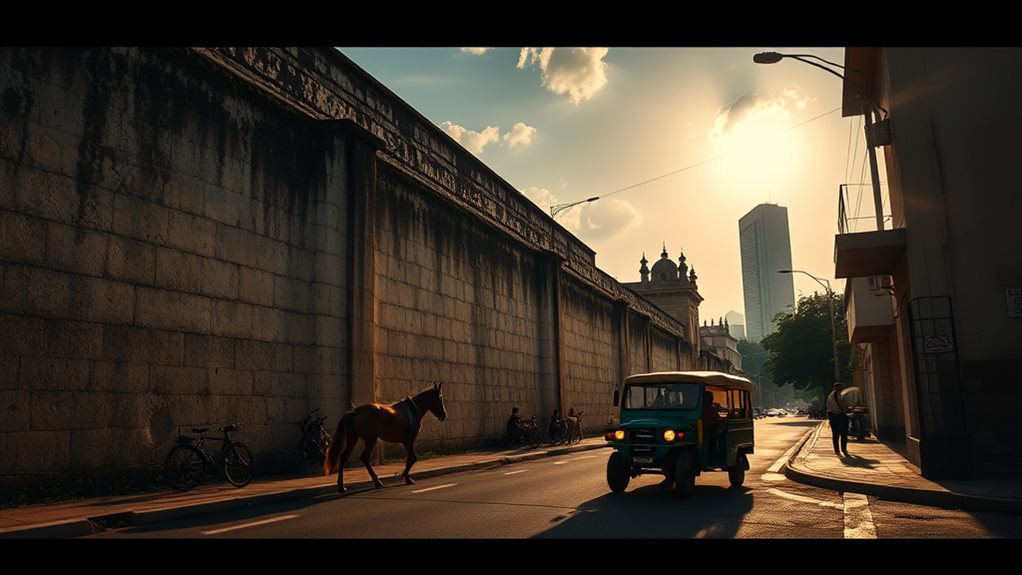Explore Manila's top museums and historical sites: the National Museum Complex (Fine Arts, Anthropology, and Natural History), Intramuros (San Agustin Church, Fort Santiago), and the Ayala Museum (pre-colonial gold). The Metropolitan Museum of Manila showcases modern art. Each offers unique insights into Philippine history and culture.
National Museum Complex

The National Museum Complex in Manila's Rizal Park comprises three main museums. The National Museum of Fine Arts (Executive House Building, opened 2000) displays Filipino visual art. The National Museum of Anthropology (Department of Finance Building, since 1998) focuses on ethnography and archaeology. The National Museum of Natural History (Department of Tourism Building, opened 2017) exhibits Philippine biodiversity.
These museums, formerly including the National Planetarium (now closed), are managed by the National Museum of the Philippines (Republic Act No. 8492). Free admission began in 2016. The complex also features the Gomburza and Lapu-Lapu monuments.
Established October 29, 1901, as the Insular Museum, the complex repurposes historic buildings, including the Legislative Building (now housing the National Museum of Fine Arts). It actively restores sites and conducts research in cultural and natural history, celebrating Museums and Galleries Month each October.
Intramuros Historical Sites
Intramuros, Manila's 1571 Spanish colonial center, thrived for over three centuries as the seat of government, religious hub, and key player in the Manila galleon trade.
It was severely damaged by World War II, but Intramuros retains its historical charm.
Explore landmarks like:
- San Agustin Church (UNESCO World Heritage Site)
- Manila Cathedral (diverse architectural styles)
- Casa Manila Museum (19th-century home replica)
- Fort Santiago (historical dungeons, learning center)
The 22-foot-high walls of Intramuros offer a vantage point for viewing cannons and the city.
The Intramuros Administration maintains the district's historical integrity.
Visit museums like the Museo de Intramuros and Destileria Limtuaco, and explore plazas such as Plaza de Roma and Plaza San Luis.
Ayala Museum's Collections

Ayala Museum: Makati landmark showcasing pre-colonial to contemporary art. See over 1,000 pre-colonial gold pieces ("Gold of Ancestors").
Sixty dioramas chronicle Philippine history (prehistoric to 1946). Explore indigenous textiles, and masterpieces by Luna, Amorsolo, and Zobel. Over 500 Chinese and Southeast Asian ceramics illustrate regional trade.
Rotating exhibits feature contemporary Filipino art, international collaborations, and thematic displays. The Philippines' first digital gallery offers interactive experiences.
The sixth-floor Filipinas Heritage Library houses rare books and archives. Guided tours and monthly events are available. See the Boat Gallery and "People Power" presentation.
Manila's Modern Museums
Manila's modern museums offer diverse collections.
The Museum of Contemporary Art and Design (MCAD), at the College of Saint Benilde, showcases international contemporary art using new media and technology.
The Metropolitan Museum of Manila, in Bonifacio Global City since October 2022, features contemporary art from international artists like Banksy and Filipino masters such as Anita Magsaysay-Ho and Nena Saguil.
Admission is free, transitioning to paid electronic ticketing.
Monthly public programs are available.
The Mind Museum, also in Bonifacio Global City, is an interactive science and technology museum for all ages.
The Money Museum, in the Bangko Sentral ng Pilipinas (BSP) complex, displays Philippine currency history:
historical currency, monetary system evolution, contemporary coins and banknotes,
and currency's significance in Philippine history.
Iconic Landmarks & Parks

Rizal Park, a sprawling green space on Roxas Boulevard, commemorates Dr. Jose Rizal's execution.
Its centerpiece, the Rizal Monument, sits amidst gardens, ponds, and fountains.
Locals frequent it.
Intramuros, the 22-foot-high "Walled City," reveals Spanish colonial defense.
Explore Fort Santiago (Rizal's final days) and San Agustin Church (a UNESCO World Heritage Site, the Philippines' oldest church).
Take a Kalesa ride.
Quiapo Church (home to the Black Nazarene) and Manila Cathedral (rebuilt multiple times) showcase Spanish colonial influence.
These, and Intramuros' other churches, offer rich history and architecture.
Rizal Park remains a vital public space.
Unique Specialty Museums
Manila boasts diverse specialty museums beyond its landmarks. Explore the National Museum Complex: Fine Arts (featuring Juan Luna's "Spoliarium").
The Fine Arts museum is just one part of a larger complex that also includes the Natural History, and Anthropology museums. The Natural History museum is home to Lolong, the largest crocodile ever captured. The Anthropology museum includes the Gold of Ancestors exhibit.
Intramuros offers Casa Manila (a restored 19th-century house), the San Agustin Museum (within the UNESCO World Heritage San Agustin Church), Baluarte de San Diego, and Bahay Tsinoy (celebrating the Chinese-Filipino community).
Modern options include The Mind Museum (interactive), Museo Pambata (child-focused), and Ayala Museum (history and contemporary art). These museums offer diverse experiences showcasing Manila's past and present.
How Do the Historical Sites in Manila Compare to the Cultural Significance of the Philippine Cordilleras?
The historical sites in Manila showcase colonial-era architecture and pivotal moments in Philippine history, reflecting urban heritage. In contrast, the philippine cordilleras terraced wonders, such as the breathtaking Banaue Rice Terraces, embody ancient ingenuity and deep cultural roots, serving as living monuments to indigenous traditions preserved through generations in harmony with nature.
Beyond Manila's City Center

Metropolitan Manila's culture extends beyond its center. Explore these museums and historical sites:
| Museum/Site | Location | Focus | Highlights |
|---|---|---|---|
| Pinto Art Museum | Antipolo | Contemporary Filipino art | Open-air galleries, gardens, architecture |
| Bahay Tsinoy | Intramuros | Chinese-Filipino history and culture | Cultural interactions |
| López Museum and Library | Pasig City | Philippine art and history | Artifacts, library |
| Museo ng Makati | Makati City | Makati's history and development | Artifacts, photos, maps |
Discover contemporary art at Pinto, Chinese-Filipino history at Bahay Tsinoy, Philippine history and art at the López Museum, and Makati's growth at Museo ng Makati. Each offers unique insights into Manila's past and present.
Planning Your Museum Trip
Planning a Manila Museum Trip
Manila's key museums are scattered across the city, making it essential to plan your route efficiently to make the most out of your museum trip.
The National Museum Complex is a must-visit, housing three of the most significant museums: the National Museum of Fine Arts, National Museum of Natural History, and the National Museum of Anthropology. The complex is located in Ermita, a district in the heart of Manila.
The Ayala Museum, on the other hand, is located in Makati, one of the financial and business districts in the Metro Manila area. The museum is known for its unique exhibitions and events that showcase the country's rich history and culture.
The San Agustin Museum, located in Intramuros, is a historic Augustinian church that has been converted into a museum showcasing the country's rich cultural heritage.
Before you go:
- Age restriction: 15–65 years old.
- Pre-book: 100 guest limit per day.
- Health declaration form required.
- Face mask and shield mandatory.
The National Museum Complex is open from 10 am to 5 pm, while the Ayala Museum is open from 9 am to 6 pm. The San Agustin Museum has varying hours, from 8 am to 12 pm and 1 pm to 6 pm.
The exhibits at the National Museum Complex include Philippine art, history, natural wonders, and the famous "Spoliarium." The Ayala Museum showcases the "Gold of Ancestors," while the San Agustin Museum features a collection of religious artifacts.
Planning your route efficiently is crucial, as you will need to factor in travel time and museum hours to make the most out of your museum trip. Make sure to book your tickets in advance and arrive early to avoid any congestion or delays.